The Crosses of Memory are located on the corner of Kintore Avenue and North Terrace in the shadow of the National War Memorial. When the memorial was initally unveiled on 31st July 1938 there were only four crosses, these being the 10th, 27th, 48th and 50th battalions which still remain at this site. The Seige of Tobruk and Royal Australian Regiment Crosses were then added to the memorial in 1978 and 1979 respectively, some 40 years later.
Concept
The 10th, 27th, 48th and 50th Memorial Crosses displayed along this pathway were originally located in France and were placed by their corresponding battalions during the First World War. The 10th, 27th and 48th Battalion crosses were originally located at Pozieres whilst the 50th was placed at Villers-Bretonneux. Each being placed shortly after the conflict at each location. Serving as a communal gravemarker, each cross was created in recognition of their fallen brothers-in-arms and remained for many years after the armistice. The crosses were eventually removed from these sites by the Imperial War Graves Commission either due to construction or dilapidation from severe weather. Through combined efforts from both the French and Australian governments and the Australian War Memorial, each were returned to the veterans clubs of their affliated battalions in the early 1930’s. While four of the crosses were returned, the crosses of both the 32nd and 43rd Battalions (both with strong South Australian ties) were not returned.
The idea of the memorial came from Mr. G. Edmonds, the secretary of the 10th Battalion A.I.F club, who contacted members of other South Australian unit clubs with memorial crosses. The four clubs comprising of the 10th, 27th, 48th and 50th formed a commitee shortly after to focus on negotitating shrines for each of their crosses. The commitee established that the North Terrace War Memorial would be a suitable location for the crosses and intended for this location to both preserve and enshrine the crosses in recognition of the sacrifice of Australian soldiers. Permission was eventually granted by the then Commissioner of Public Works, Sir Herbert Hudd.
10th Battalion Commemorative Cross
The 10th Battalion Cross is actually a second construction and was not the first to be placed as a grave marker. The first was instead a very rough design made from a nearby ammunition box and served as a place marker for a year until a more permanent cross was constructed. The current cross on display was made in June 1917 when the 10th Battalion was resting outside of the Ribemont line.
27th Battalion Commemorative Cross
The 27th Battalion Cross is one of two that the unit placed during their conflicts in World War I. While this one was placed at Pozieres during the last week of August 1916, its sibling was erected on July 15, 1917 at Flers. The 27th Battalion’s Pozieres Cross was constructed by Pioneer-Sergeant R. J. Tehan shortly after the Battle of Pozieres. Part of the cross is now missing as a portion was broken off during a following conflict with the German army in March 1918.
Prior to the suggestion of memorializing the cross, the 27th had initially suggest to keep the cross at the Keswick headquarters of the Battalion. Yet this suggestion was not favourable to many of the battalion’s veteran members as their battalion primarily enlisted at Unley and were colloquially recognized as “Unley’s Own”. It was therefore decided that the Unley Soldier’s Garden of Honour would have been the most suitable spot due to its significance to the battalion.
48th Battalion Commemorative Cross
This Celtic-style cross was placed by the battalion shortly before their march onward to Albert and Moquet Farm and stood for some 14 years after. Its location was placed upon the ridge nearby the Pozieres Windmill, which served as a rallying point for the 48th and was therefore deemed a suitable location to bury their fallen comrades. During the proceeding 14 years, the Cross became weathered after embracing the snowy and rainy conditions of the French countryside.
Upon repatriation to South Australia, the cross was placed in the care of the 48th’s Brigadier-General R. L. Leane where it played an active role in reunion meetings of the 16th-48th Club.
50th Battalion Commemorative Cross
Unlike its contemporaries, the 50th Battalion’s cross was constructed and placed on the outskirts of Villers-Bretonneux, France. The cross was placed here in April 1918 and served as a grave site to those who had fallen during the conflict to reclaim the village from the German forces. Once this cross was removed, the Imperial War Graves Commission returned it to the 50th Battalion A.I.F Club where it was exhibited to club members before being incorporated into the current memorial.


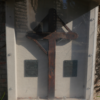

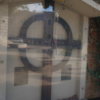
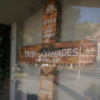
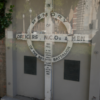
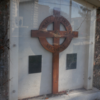
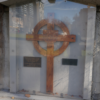
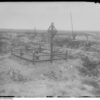

Comments